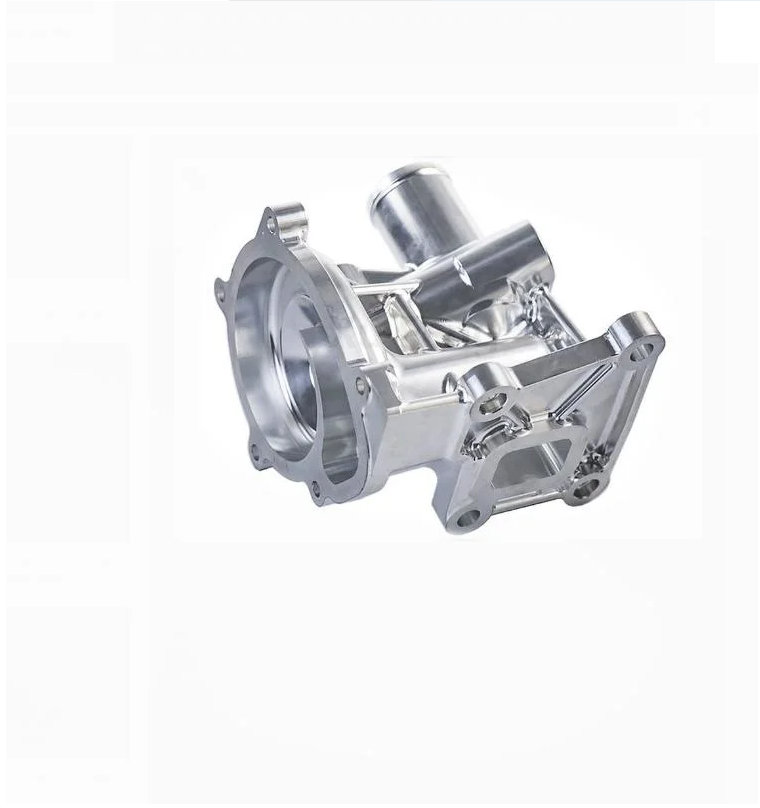- Time:2024/07/04 Posted:Dongguan Quality Innovation And Technology Co.,Ltd
In the world of modern manufacturing, precision CNC (Computer Numerical Control) machining has revolutionized the production of parts, particularly in the realm of 3/4/5 axis machining. These advanced technologies allow for the creation of complex components with unparalleled accuracy, efficiency, and flexibility. Here’s how precision CNC machining transforms the manufacturing of 3/4/5 axis parts:

Understanding 3/4/5 Axis Machining
1. 3-Axis Machining
In 3-axis machining, the cutting tool moves along the X, Y, and Z axes. This method is ideal for simple components and operations such as drilling, milling, and tapping. While effective for basic tasks, 3-axis machining can be limited in producing parts with intricate geometries.
2. 4-Axis Machining
4-axis machining adds a rotational movement around the X-axis (referred to as the A-axis), enabling the cutting tool to approach the workpiece from additional angles. This capability allows for more complex part geometries and can improve the efficiency of certain machining processes.
3. 5-Axis Machining
5-axis machining is the pinnacle of CNC technology, adding a rotational movement around the Y-axis (B-axis) to the capabilities of 4-axis machines. This allows the cutting tool to move along five different axes simultaneously, making it possible to create highly complex parts with intricate details and tight tolerances in a single setup.
Enhanced Precision and Accuracy
4. Complex Geometries and Tight Tolerances
Precision CNC machining excels in producing parts with complex geometries and tight tolerances. The ability to control the cutting tool along multiple axes ensures that intricate designs can be executed with remarkable accuracy. This precision is crucial for industries such as aerospace, medical devices, and automotive, where even the slightest deviation can lead to failure.
5. Consistent Quality
CNC machines operate with a high degree of repeatability, ensuring consistent quality across large production runs. This consistency reduces the risk of defects and ensures that each part meets the required specifications. The result is a higher yield of usable parts, reducing waste and increasing overall efficiency.
Increased Efficiency and Productivity
6. Reduced Setup Time
With traditional machining methods, complex parts often require multiple setups and re-fixturing, which can be time-consuming and prone to errors. 5-axis CNC machining, however, allows for the production of complex parts in a single setup. This not only reduces setup time but also minimizes the risk of human error, enhancing overall productivity.
7. Faster Production Speeds
CNC machines can operate at high speeds without sacrificing precision. This capability significantly reduces production times, enabling manufacturers to meet tight deadlines and increase output. The efficiency of CNC machining is particularly beneficial for high-volume production, where time savings translate to cost savings.
Versatility and Flexibility
8. Wide Range of Materials
Precision CNC machining is compatible with a wide range of materials, including metals (such as aluminum, steel, and titanium), plastics, and composites. This versatility allows manufacturers to choose the best material for each application, optimizing the performance and durability of the final product.
9. Custom and Complex Parts
The flexibility of 5-axis CNC machining allows for the creation of custom and complex parts that would be difficult or impossible to produce with traditional methods. This capability is especially valuable for prototyping and low-volume production runs, where design changes can be quickly implemented without extensive retooling.
Cost-Effectiveness
10. Reduced Labor Costs
The automation of CNC machining reduces the need for manual intervention, lowering labor costs. Skilled operators can oversee multiple machines simultaneously, increasing productivity without a corresponding increase in labor expenses. This cost-effectiveness makes precision CNC machining an attractive option for manufacturers of all sizes.
11. Minimized Material Waste
Precision CNC machining optimizes material usage by precisely cutting components to the required dimensions. This minimizes material waste, reducing costs and contributing to more sustainable manufacturing practices. The efficiency of CNC machining ensures that raw materials are utilized to their fullest potential, maximizing value.
Conclusion
Precision CNC machining has transformed the manufacturing of 3/4/5 axis parts by enhancing precision, efficiency, versatility, and cost-effectiveness. The ability to produce complex geometries with tight tolerances in a single setup revolutionizes the production process, making it faster and more reliable. Whether for high-volume production or custom prototypes, precision CNC machining delivers consistent quality and exceptional performance, driving innovation and excellence in modern manufacturing. By leveraging the capabilities of 3/4/5 axis CNC machining, manufacturers can meet the demands of today’s advanced industries with confidence and precision.
